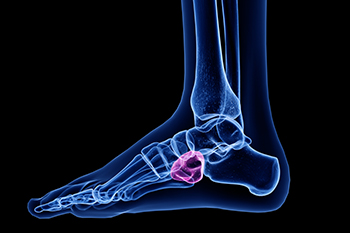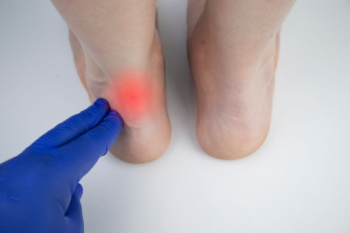
Cuboid syndrome is characterized by pain and discomfort on the outer edge of the foot, often caused by a dislocation or subluxation of the cuboid bone. This condition frequently affects athletes and can result from acute injury or repetitive strain. Relief techniques for cuboid syndrome include specific therapeutic exercises such as the cuboid whip and cuboid squeeze. The cuboid whip involves gently mobilizing the cuboid bone to restore its proper position, while the cuboid squeeze helps alleviate pain by applying pressure to the area. Additionally, foot taping can support and stabilize the affected area, reducing discomfort during movement. Using orthotic inserts can also improve foot alignment and distribute pressure more evenly. If you have pain in this part of your foot, it is suggested that you contact a chiropodist who can effectively treat this condition.
Cuboid syndrome, also known as cuboid subluxation, occurs when the joint and ligaments surrounding the cuboid bone in the foot become injured. If you think that you may have cuboid syndrome, please consult with one of the chiropodists from The Footcare Centre. Our chiropodists will assess your condition and provide you with quality foot and ankle treatment.
Causes
The cuboid bone is one of the seven tarsal bones located in the foot. Cuboid syndrome develops when the cuboid bone moves down and out of alignment with the other bone (calcaneus bone) in the joint of the foot. Cuboid syndrome can be the result of a sudden injury like an ankle sprain, or it may develop slowly over time from repetitive tension through the bone and surrounding structures.
Symptoms
The most common symptom of cuboid syndrome is pain on the outside of the foot which may worsen with activity.
Other possible symptoms include:
Difficulty bearing weight on the affected foot
Swelling
Sensitivity on the bottom of the foot
Reduced range of motion
Diagnosis
A chiropodist can diagnose cuboid syndrome based on your medical history and a physical examination of the foot. Imaging studies, such as X-rays or MRIs, often fail to show the dislocated cuboid.
Treatment
Treatment often includes resting, icing, compressing and elevating the affected foot, taping, wearing orthotic inserts, and taking anti-inflammatory medications to reduce pain. The chiropodist may also be able to manipulate the dislocated bone back into alignment.
If you have any questions, please feel free to contact our office located in . We offer the newest diagnostic and treatment technologies for all your foot care needs.








 Ankle sprains
Ankle sprains